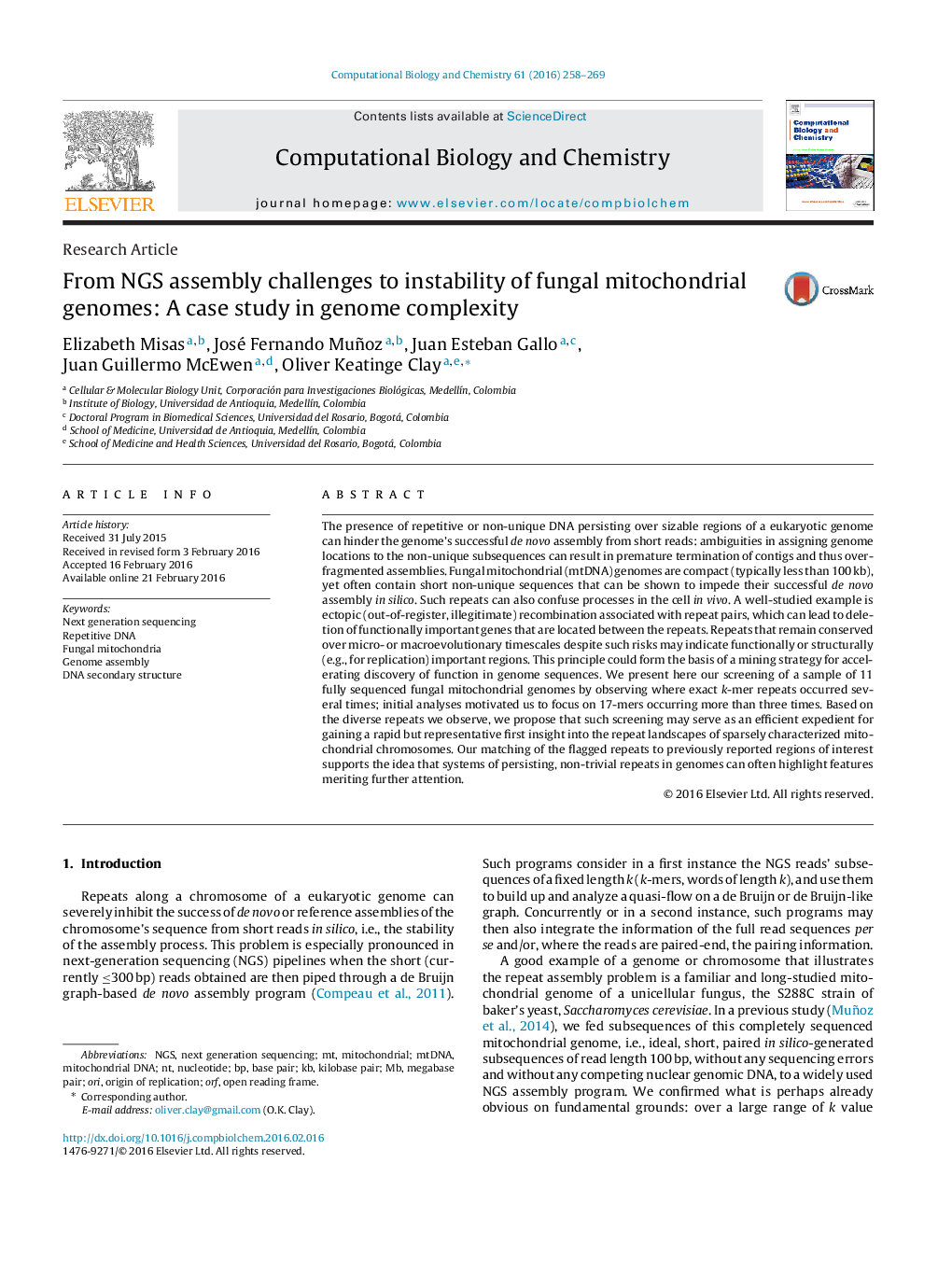| کد مقاله | کد نشریه | سال انتشار | مقاله انگلیسی | نسخه تمام متن |
|---|---|---|---|---|
| 14952 | 1362 | 2016 | 12 صفحه PDF | دانلود رایگان |

• Fungal mitochondrial genomes can have complex repeat systems.
• Repeats in mitochondrial genomes can mislead short-read assembly programs.
• Repeats can also lead to illegitimate intrachromosomal recombination and large-scale deletions.
• Where persistent repeats are stably present, their locations can indicate functional or structural importance.
The presence of repetitive or non-unique DNA persisting over sizable regions of a eukaryotic genome can hinder the genome's successful de novo assembly from short reads: ambiguities in assigning genome locations to the non-unique subsequences can result in premature termination of contigs and thus overfragmented assemblies. Fungal mitochondrial (mtDNA) genomes are compact (typically less than 100 kb), yet often contain short non-unique sequences that can be shown to impede their successful de novo assembly in silico. Such repeats can also confuse processes in the cell in vivo. A well-studied example is ectopic (out-of-register, illegitimate) recombination associated with repeat pairs, which can lead to deletion of functionally important genes that are located between the repeats. Repeats that remain conserved over micro- or macroevolutionary timescales despite such risks may indicate functionally or structurally (e.g., for replication) important regions. This principle could form the basis of a mining strategy for accelerating discovery of function in genome sequences. We present here our screening of a sample of 11 fully sequenced fungal mitochondrial genomes by observing where exact k-mer repeats occurred several times; initial analyses motivated us to focus on 17-mers occurring more than three times. Based on the diverse repeats we observe, we propose that such screening may serve as an efficient expedient for gaining a rapid but representative first insight into the repeat landscapes of sparsely characterized mitochondrial chromosomes. Our matching of the flagged repeats to previously reported regions of interest supports the idea that systems of persisting, non-trivial repeats in genomes can often highlight features meriting further attention.
Mitochondrial genomes can contain repeat landscapes ranging from notable absence of repeats, as in human and fission yeast, to rich and complex repeat systems as in baker's yeast. In this article we characterize exact repetitions of 17-mers in bona fide complete mitochondrial genome sequences of 11 fungi. This strategy allowed us to view and analyze a diversity of repeat landscapes, each with their own repeat ‘fauna and flora’. The figure depicts three mitochondrial genomes that contain amply repeated 17-mers (horizontal axis: number of occurrences; vertical axis: number of instances of that number of occurrences); examples of repeats with strong presence in the mitochondrial genomes are represented by sequences in corresponding colors. Figure optionsDownload as PowerPoint slide
Journal: Computational Biology and Chemistry - Volume 61, April 2016, Pages 258–269